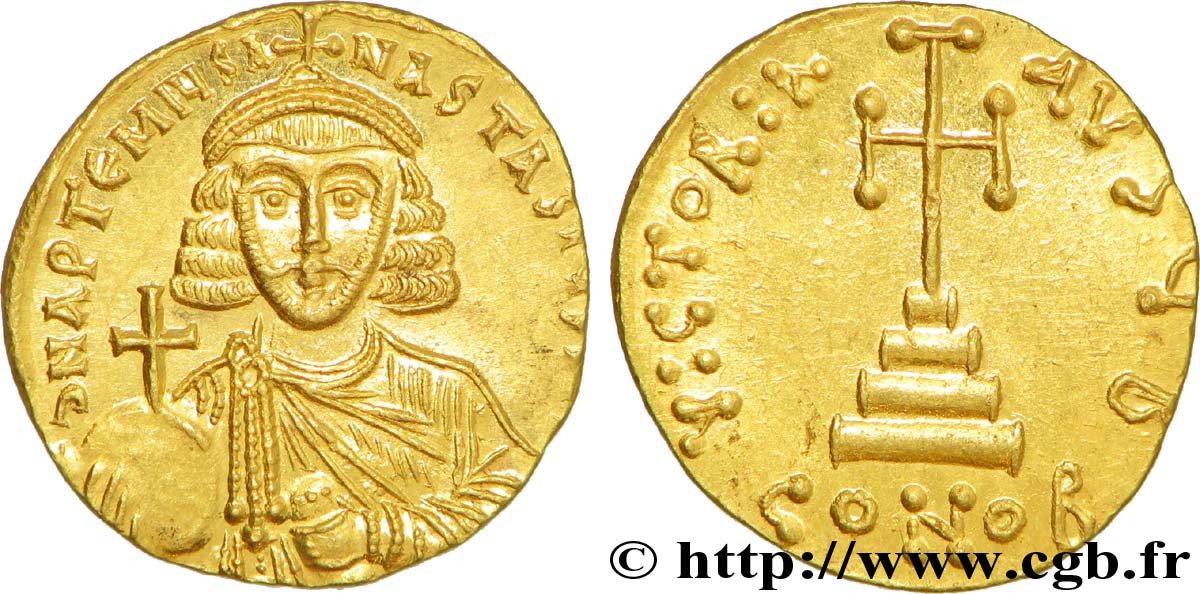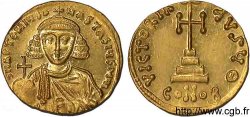- Accueil
- >
- >
bby_210912 - ANASTASIUS II Solidus
Not available.
Item sold on our e-shop (2010)
Price : 3 200.00 €
Item sold on our e-shop (2010)
Price : 3 200.00 €
Type : Solidus
Date: 713-715
Mint name / Town : Constantinople
Metal : gold
Millesimal fineness : 1000 ‰
Diameter : 19 mm
Orientation dies : 6 h.
Weight : 4,47 g.
Rarity : R3
Officine: 2e
Coments on the condition:
Exemplaire de qualité exceptionnelle pour ce type monétaire sur un petit flan, légèrement court sur les légendes. Portrait de touté beauté où tous les détails vestimentaires sont bien visibles. Revers fantastique. Conserve l’intégralité de son brillant de frappe et de son coupant d’origine
Catalogue references :
Obverse
Obverse legend : D N APTEMIYS - ANASTASIVS MYL.
Obverse description : Buste diadémé, couronné d'Anastase II, vêtu de la chlamyde de face, tenant un globe crucigère de la main droite et l'akakia de la main gauche.
Obverse translation : (Notre seigneur Artémius Anastase pour de nombreuses années).
Reverse
Reverse legend : VICTORIA - AVGYB// CONOB.
Reverse description : Croix potencée posée sur trois degrés.
Reverse translation : “Victoria Augusti”, (La victoire de l'auguste).
Commentary
Solidus avec le nom d’Artemius de l’empereur et d’Anastase que prit l’empereur en mémoire du premier empereur byzantin ‘(491-518) issu du service civil à l’image de Dèce (249-251) qui s’était adjoint celui de Trajan qui avait conquis et pacifié la Dacie en 101-107.








 Report a mistake
Report a mistake Print the page
Print the page Share my selection
Share my selection Ask a question
Ask a question Consign / sell
Consign / sell
 Full data
Full data
